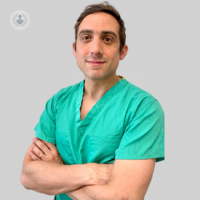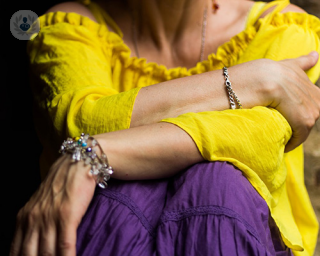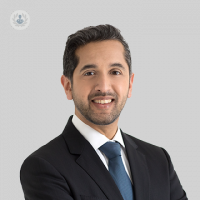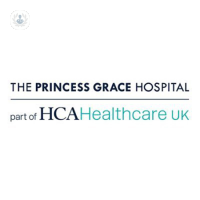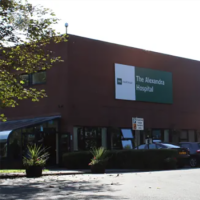What is oncoplastic and reconstructive breast surgery? | Top Doctors
What is oncoplastic and reconstructive breast surgery?
Oncoplastic and reconstructive breast surgery rebuilds the breast after breast cancer surgery, with the aim of reducing scarring and preserving as much of the existing breast tissue as possible. There are various surgical techniques and procedures available and the treatment usually requires the input of a multidisciplinary team, including plastic surgeons and surgical oncologists.

What does oncoplastic and reconstructive surgery consist of?
Many women can now undergo breast cancer surgery and reconstructive breast surgery at the same time, which may involve either a breast reduction or mastopexy (breast lift).
When a partial or total mastectomy is required, it can leave the breast distorted. Due to this, during the procedure, your surgeon will remove the tumour and lymph nodes from the affected breast and then perform a breast reduction or lift to restore a natural appearance. The other breast is also modified to ensure symmetry.
To access the breast, your surgeon will need to make an incision around the nipple and areola, then horizontally from the nipple towards the fold of the breast and finally along this fold to create an anchor-shaped incision. The amount of tissue that is removed depends on the amount of cancerous tissue and its position in the breast. If you have opted to undergo a mastectomy, then all of the breast tissue is removed.
Types of breast reconstruction techniques
There are various types of breast reconstructive techniques and you and your surgeon will decide together which one is the most suitable prior to the operation:
- Implant-based reconstruction - your surgeon replaces your breast using a saline or silicone gel implant.
- Flap reconstruction using the back muscle - an incision is made in your back, the muscle is slid under your arm to your chest and formed into the shape of a breast.
- DIEP flap - soft tissue from the stomach replaces the breast tissue.
Not all women can undergo both cancer and reconstructive surgery at the same time due to an underlying health problem which puts them at an increased risk. In some cases, women simply prefer to wait and decide how they feel about reconstructing their breasts after recovering from cancer. This would be known as a two-staged or delayed procedure.
What is the benefit of having oncoplastic surgery at the time reconstructive surgery?
The main advantage of having both procedures done at the same time is that it only requires one operation. Therefore, you can avoid having to go through both the side-effects of the anaesthesia and recovery from the operation twice. If you have particularly large breasts and you undergo a breast reduction, it can make radiotherapy following surgery easier and more effective.
What is the recovery period like?
You may be able to have the surgery done on an outpatient basis or you may have to stay in hospital overnight. It’s normal to feel pain and numbness around your breasts and armpits. You will be given instructions on how to care for the wounds at home, what types of bras to use, how to use drains and recognise signs of possible infection.
The full recovery time takes around 6 weeks. However, some people start to feel better sooner and can return to work after 3-4 weeks.
Which specialist perform this surgery?
The specialist that performs this type of surgery is an oncoplastic breast surgeon.
